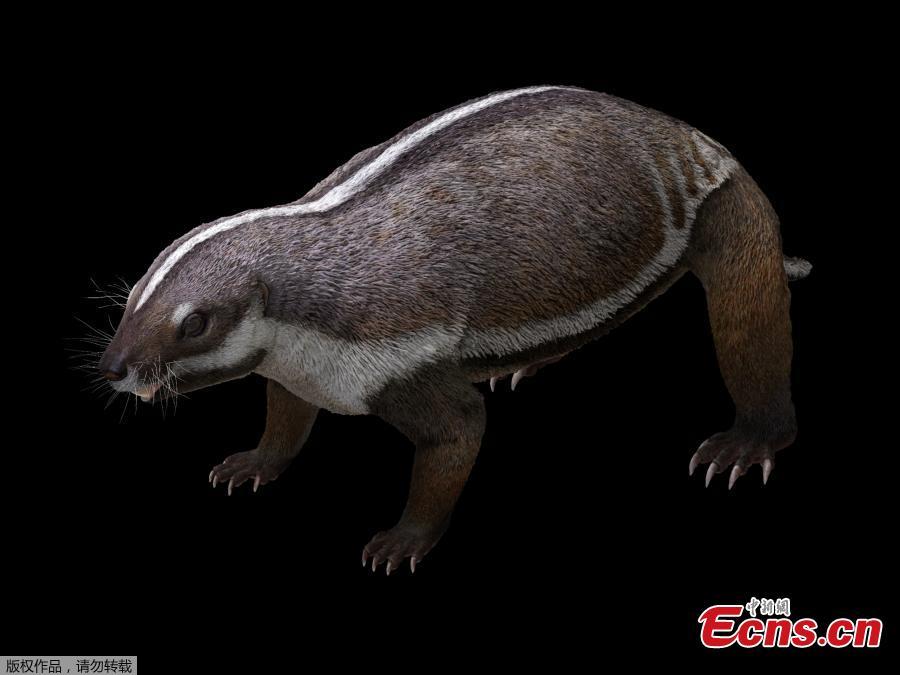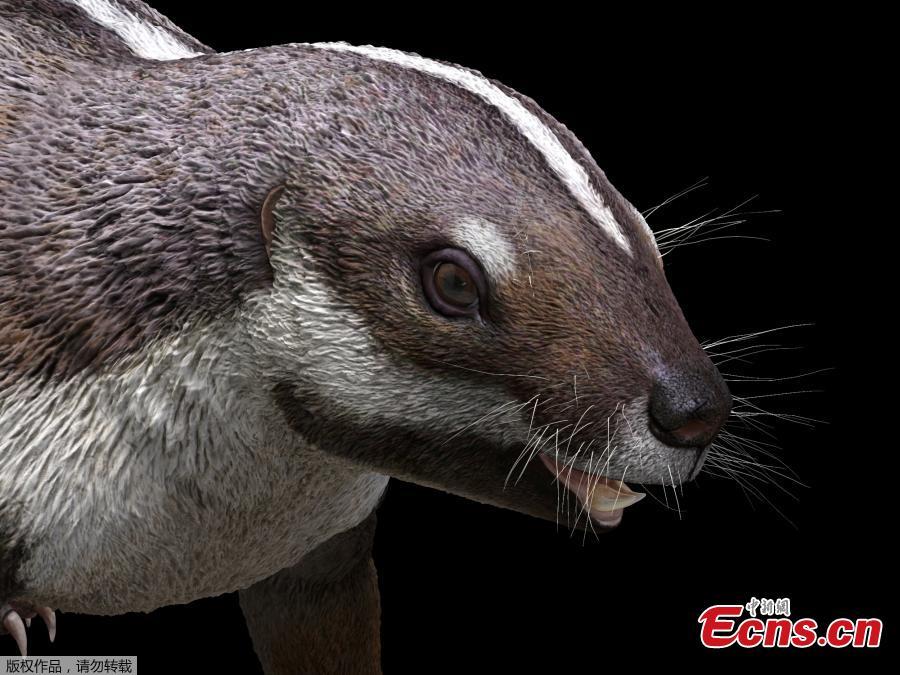
The photo shows life-like reconstruction of the opossum-sized mammal Adalatherium hui that lived 66 million years ago alongside dinosaurs on the island of Madagascar during the Cretaceous Period. (Photo/Agencies)
Researchers described an exquisitely preserved fossil of the plant-eating mammal named Adalatherium hui, which lived 66 million years ago during the Cretaceous Period and superficially resembled a badger with its long torso and stubby tail.
Scientists had known precious little about southern hemisphere mammals during the Mesozoic Era, the age of dinosaurs, with the fossil record from the northern hemisphere much more extensive.
Adalatherium offers by far the most complete skeleton of a Mesozoic mammal from Gondwana, which was Earth's southern supercontinent encompassing Africa, South America, India, Australia and Antarctica. It also is the fullest fossil representing an enigmatic mammal group called gondwanatherians that thrived for tens of millions of years but died out about 45 million years ago leaving no living relatives.

The photo shows life-like reconstruction of the opossum-sized mammal Adalatherium hui that lived 66 million years ago alongside dinosaurs on the island of Madagascar during the Cretaceous Period. (Photo/Agencies)

























